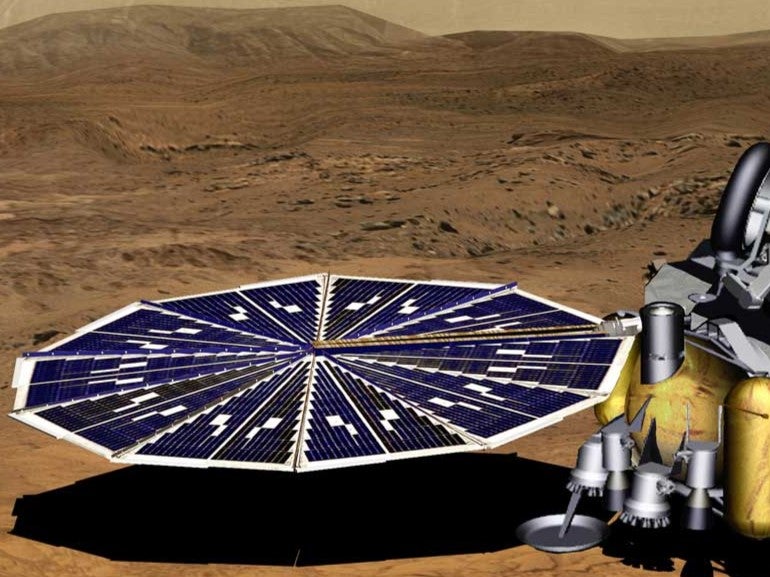Solar panel discovery paves way for exploration of distant planets

Your support helps us to tell the story
From reproductive rights to climate change to Big Tech, The Independent is on the ground when the story is developing. Whether it's investigating the financials of Elon Musk's pro-Trump PAC or producing our latest documentary, 'The A Word', which shines a light on the American women fighting for reproductive rights, we know how important it is to parse out the facts from the messaging.
At such a critical moment in US history, we need reporters on the ground. Your donation allows us to keep sending journalists to speak to both sides of the story.
The Independent is trusted by Americans across the entire political spectrum. And unlike many other quality news outlets, we choose not to lock Americans out of our reporting and analysis with paywalls. We believe quality journalism should be available to everyone, paid for by those who can afford it.
Your support makes all the difference.Scientists have discovered how to build radiation-tolerant solar panels that could be used for space-based installations and solar-powered spacecraft.
A team from the University of Cambridge proposed an ultra-thin photovoltaic cell design that can tolerate irradiation in space that causes damage and lowers efficiency of conventional solar cell materials.
This means it would be possible to deploy them in higher orbits around the Earth, such as the Molniya orbit that passes through the centre of our planet’s proton radiation belt.
Middle Earth orbits are becoming increasingly necessary for satellites due to how cluttered low Earth orbits have become in recent years.
Other applications include space exploration in severe radiation environments, such as Jupiter’s moon Europa. In order to land a solar-powered spacecraft on the surface of Europa, radiation-tolerant solar panels need to be developed.
Two types of photovoltaic devices were built: one using an on-chip design; the other using a mirrored back to boost light absorption.
The scientists tested the solar cells by bombarding them with protons generated at the Dalton Cumbrian Nuclear facility, which allowed them to mimic the effects of radiation in space.
“Our ultra-thin solar cell outperforms the previously studied, thicker devices for proton radiation above a certain threshold,” said Dr Armin Barthel, who led the research.
“The ultra-thin geometries offer favourable performance by two orders of magnitude relative to previous observations.”
The scientists claim the ultra-thin photovoltaic cells will also lead to a lighter load and significant reductions to launch costs.
A paper detailing the research, titled ‘Radiation effects in ultra-thin GaAs solar cells’, was published in Journal of Applied Physics on Tuesday.

Join our commenting forum
Join thought-provoking conversations, follow other Independent readers and see their replies
Comments